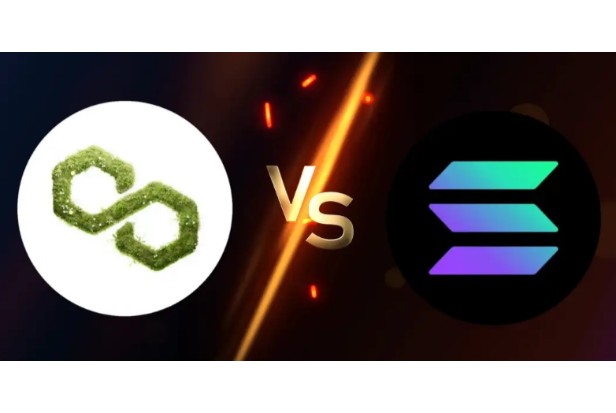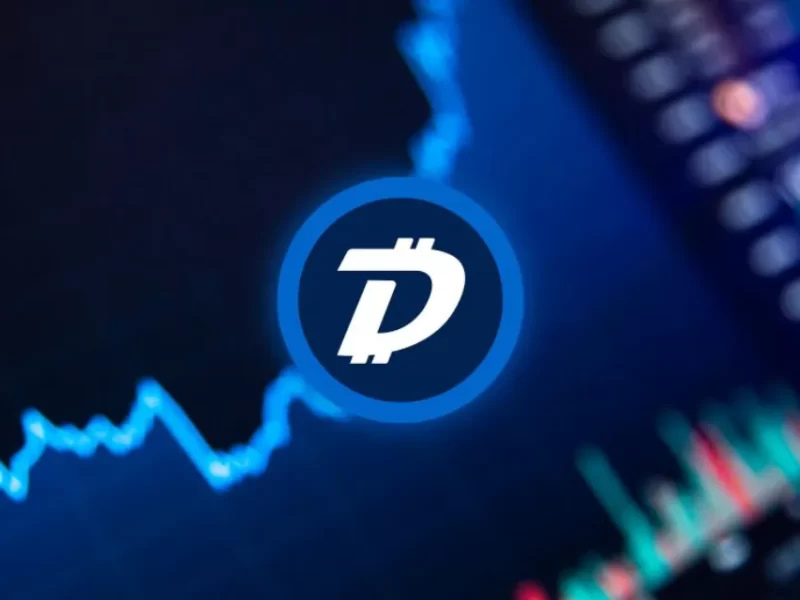Here’s everything you need to know about Polygon (MATIC) vs Solana (SOL). Both of these projects provide developers with a flexible network to build on and both have their eyes on solving some of the key issues with Ethereum at the moment.
What is Polygon?
Polygon (MATIC) is a developer-centric blockchain that was designed to alleviate some of the biggest issues faced by that community today. The protocol was launched with the goal to one day function as Ethereum’s “Internet of blockchains.” The developers realized early on that there were to be thousands of Ethereum-based blockchains operating in the market.
Each of these networks operated in a singular fashion, which limits their capabilities and hinders developers’ operations. The system provides a reliable and secure infrastructure for creating Ethereum-based blockchains. The design also helps to connect these networks in a seamless manner.
Read More: Crypto Compare Guide 2023 – Exchanges, Wallets, Tokens & More
Polygon is well recognized in the market at this time. The protocol has gained a significant following due to its zero-gas transactions model and scalability. The protocol also integrates Custom wasm execution environments and a variety of tools that developers can leverage to improve their productivity and final results.
What is Solana?
Solana is a third-generation blockchain that can support the latest DeFi features. The network provides high-performance via a secure and open infrastructure. The developers put special attention towards making the protocol scalable. The goal of the project was to improve the blockchain development process and eliminate the bottlenecks and other issues that Ethereum develops face daily.
Anatoly Yakovenko founded Solana in 2017 during the first crypto breakout. This year saw both Ethereum and Bitcoin suffer from crushing congestion that caused both networks to grind to a halt. There is no doubt that these scenarios helped to motivate Yakovenko and his team. Today, the protocol lists Greg Fitzgerald and Eric Williams as major components of the team.
What Problems Was Polygon Built to Alleviate?
One of the premier problems that Polygon was designed to eliminate was slow transactions due to scalability concerns. The network tackles this problem through the introduction of a more efficient consensus algorithm. This scalable consensus system enables users to avoid the ridiculous gas fees found on Ethereum currently.
Another major issue that Polygon seeks to alleviate is developer onboarding. The network tackles the problems in multiple ways. For one, the protocol provides full interoperability with the Ethereum ecosystem. Develops can leverage all of their favorite tools. This way, developers never have to learn new code and can convert or expand their Ethereum-based Dapps to Polygon and provide a better UX for all.
Ethereum has long been the go-to protocol for DeFi networks. However, it’s a second-generation blockchain that is limited in its scalability and capabilities. Developer restrictions such as a non-customizable tech stack have caused headaches for developers in the past. Polygon introduces a highly customizable protocol that is more cost-efficient than competitors.
What Problems Was Solana Built to Alleviate?
Solana was designed to provide unmatched scalability to the market. The protocol leverages a proprietary architecture to make this possible. Notably, Solana is capable of 29,171 transactions per second. When compared to Ethereum’s 15 tps, it’s obvious why a developer would choose to migrate their protocols to Solana. Solana’s developers solve this problem by enabling transaction throughput to scale proportionally with network bandwidth.
Solana helps to provide more decentralization in the market. Unlike Polygon, Solana seeks to compete with Ethereum directly rather than enhance its ecosystem. This competition is needed to help keep innovation up and fees lower. Solana provides decentralization through the use of a custom-built blockchain.
How Does Polygon Work?
Polygon eliminates the technical barriers associated with blockchain creation on the Ethereum network. The protocol introduces One-click deployment which makes the entire process as simple as possible. The network also provides access to a growing number of modules that streamline development further.
These modules include the most important aspects of blockchain creation. For example, there are modules that cover consensus, staking, governance, EVM/Ewasm, execution environments, dispute resolvers, and much more. This plug-and-play style of blockchain development opens the door for large-scale adoption of the technology.
Polygon Protocol
The network introduces the messaging system that enables Ethereum-based networks to communicate directly. The protocol leverages Polygon’s unique multi-layered structure. The network has four separate layers that work together to provide fast transactions and smart contract execution.
Notably, there is a layer that operates like Ethereum to provide a seamless conversion for developers. This layer handles staking and finality. It also is the main protocol responsible for inter-blockchain messaging. The security layer handles validation services and validators.
How Does Solana Work?
Solana also leverages a unique structure to provide secure and scalable decentralized services to the market. The protocol leverages a system called Turbine that operates as a broadcasting system. Solana also integrates parallel smart contracts on its proprietary Sealevel protocol. This structure enables the network to execute thousands of smart contracts at the same time which expands its scalability considerably.
Cloudbreak
Cloudbreak is the accounts database for the network. This system is more advanced than its predecessors in that it can read and write data at the same time. This strategy helps to eliminate congestion further and improves the network’s overall efficiency. Cloudbreak works with Archivers. Archivers are nodes that store the ledger. They also provide this information to the rest of the network when requested.
If you are interested in knowing how Solana different from other cryptocurrencies, welcome to check the folloing guides!
- Polkadot vs Solana – Differences & Similarities You Need to Know – BTCADV
- Cardano vs. Solana – 2022 Cryptocurrency Comparison – BTCADV
How Do Their Consensus Mechanisms Differ?
In respect of its consensus method, the Solana blockchain offers something special. The network employs a set or sequence of calculations to choose the best technique for confirming the time difference between two events. The blockchain platform employs a hybrid consensus algorithm that combines the greatest aspects of Proof of Stake and Proof of History, as opposed to relying solely on PoW consensus.
Polygon uses a variety of techniques to provide a quick blockchain network in addition to connecting to the main Ethereum network. The Proof of Stake consensus technique is used by the blockchain network to secure the network and generate new MATIC tokens.
Which Blockchain Processes Transactions Faster?
The Solana blockchain network eliminates the need for real-time communication between nodes, increasing overall efficiency. Solana is reliant on Tower Byzantine Fault Tolerance (tBFT) and makes use of GulfStream to push transactions to the edge. The network can quickly handle over 50000 transactions per second because network auditors can effortlessly perform transactions at faster speeds.
In terms of transaction speed, Polygon has an upper hand over Solana. The network is a definite victor for both developers and users, with the ability to process approximately 65,000 transactions per second.
Which Blockchain is More Scalable?
The most important distinction between Solana and Polygon is undoubtedly scalability. Blockchain systems should be satisfactorily scalable to ensure that the desired transactions are completed.
Solana can address the scalability issue with an elevated method that features an innovative time architecture, faster transaction processing, and a cost-effective consensus prototype. Meanwhile, Polygon focuses on scalability via plasma-enabled sidechain and multichain features and functions.
Solana Vs Polygon: Tokenomics
Solana and Polygon have very similar tokenomics to most Proof-of-Stake blockchains. In order to secure the network, both Solana and Polygon need to pay out inflationary rewards to incentivize stakers to validate the network.
Solana currently has an 8% inflation rate and Polygon has a 10% inflation rate, which means Polygon (MATIC) mints more tokens every year. Both networks pay out an average staking rate of 8% – which means that Solana has better tokenomics. This is because you don’t lose purchasing power when staking your tokens as the inflation rate and the payout are even.
Solana Vs Polygon: Design of the Blockchain
The Solana blockchain’s architecture is heavily reliant on the Solana cluster. A cluster is essentially a group of validators that collaborate to route purchases while also maintaining the ledger. The cluster leader is in charge of bundling and timestamping incoming transactions using Proof of History consensus.
Polygon provides among the most important tools for taking part in and controlling a new seamless economy and society. It should be noted that the sidechain functions similarly to other POS blockchains. Furthermore, the transactions are prevalent on the ETH mainnet in the shape of a cluster.
Is Solana Or Polygon Better for DeFi?
Solana currently has more ‘Total Value Locked’ than Polygon with $5.5B compared to $3.8B locked on DeFi applications. With that said, we believe that Polygon (MATIC) provides a better user experience for investors looking to get access to yields on stablecoins and other tokens.
Polygon has a wide variety of applications like AAVE, Curve, QuickSwap and Stargate that make it easy to earn up to 10% APY on stablecoins.
GameFi and NFTs
When it comes to NFTs, Solana provides a superior experience compared to Polygon (MATIC). This is due to their recent integration with OpenSea, which allows users to buy, sell and trade SOL native NFTs through their platform. Polygon is also integrated with OpenSea, but their NFTs trade hardly any volume.
Final Verdict: Polygon Wins
Overall, we think Polygon (MATIC) is better for investors & for DeFi users. Their network is easy to use and most importantly is compatible with other EVM chains making it very easy to bridge between networks.
Polygon is also an Ethereum Layer 2, which means popular applications like AAVE and Curve are deployed on their platform. These are the safest and best DeFi applications to earn yields on USDC, USDT, MATIC, ETH, WBTC and other popular cryptocurrency tokens.



